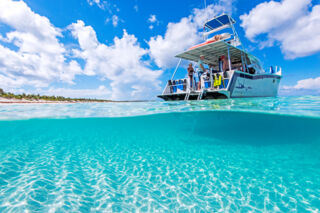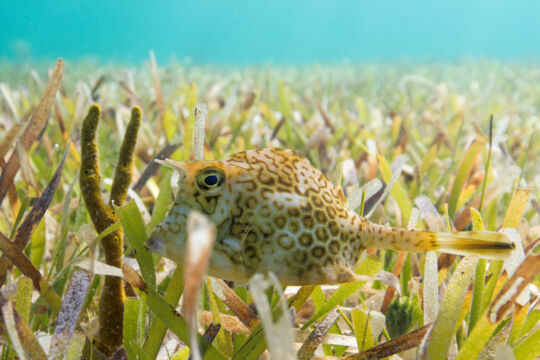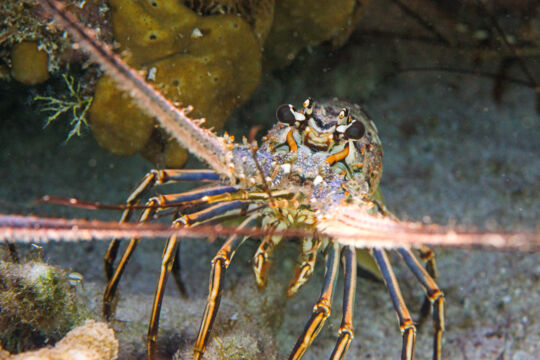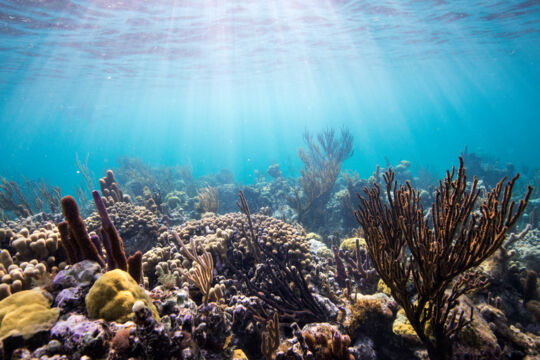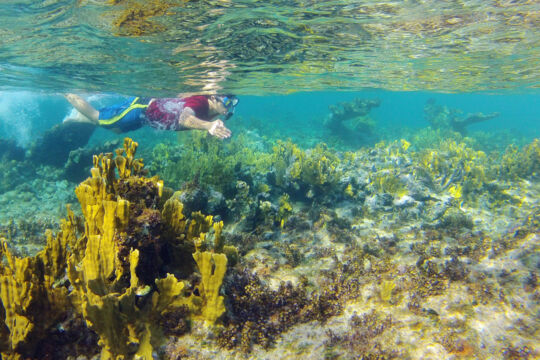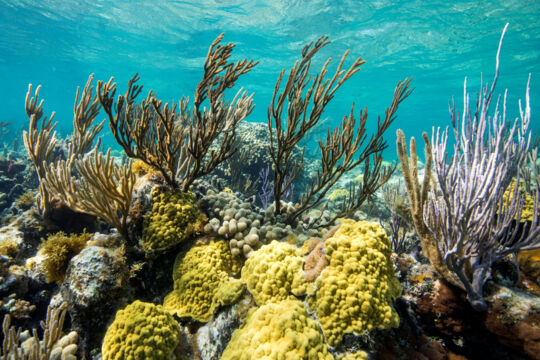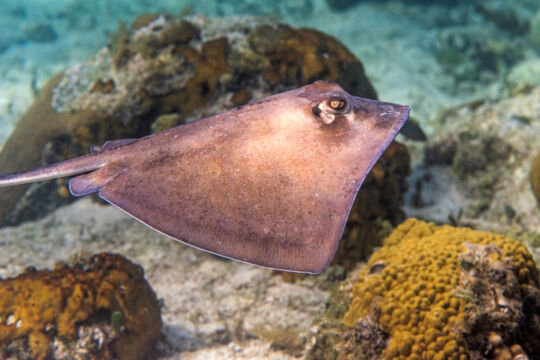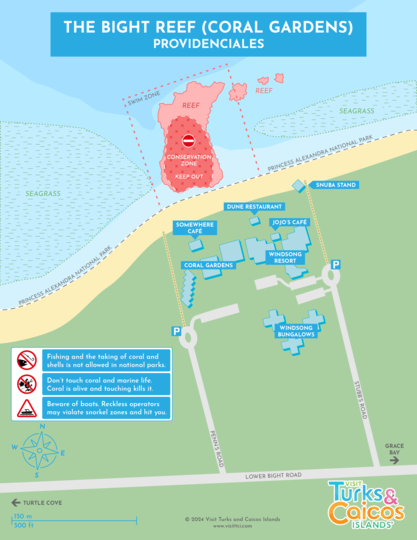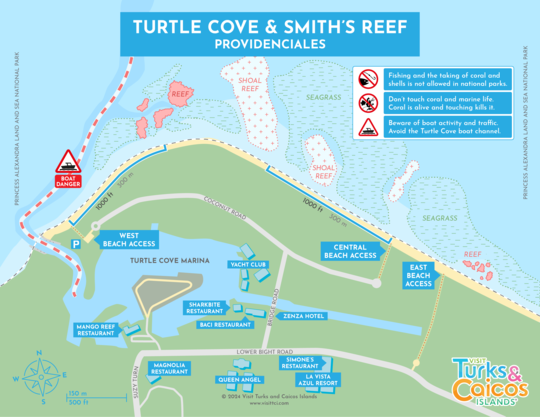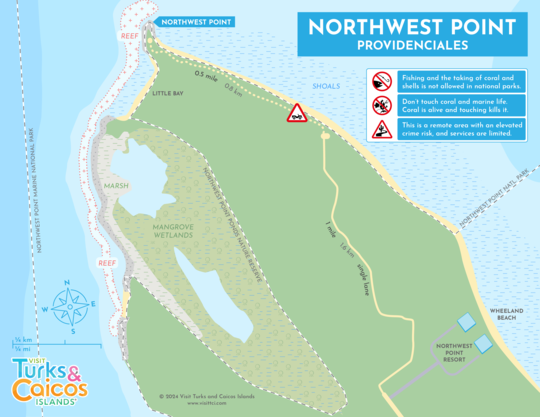Providenciales Snorkeling

Providenciales offers some great snorkeling right from the beach. Generally, the best snorkeling reefs are off the north coast, but there are quite a few interesting sites elsewhere as well. See detailed information on the main locations below. If your schedule allows, it’s worth waiting for calm and sunny conditions as your snorkeling experience will be more enjoyable.
Beach Snorkel, or Take a Snorkeling Cruise?
A good snorkeling cruise will typically be better in several ways than the experience at one of the reefs near the beach. Visibility is almost always far superior, reef and coral formations are usually much better, and you’ll also have a greater chance to see some of the larger sea animals. However, one of the decent shore sites on Providenciales (such as the outer reef at Smith’s Reef) will typically offer a wider selection of approachable reef fish and small creatures, along with the obvious benefit of not costing anything.
One of the dedicated snorkeling trips (usually traveling out to the south edge of the Caicos Banks) offered by the local scuba diving companies will usually give by far the best underwater experience compared to a combination beach and snorkeling cruise. Most boat tours include the use of equipment, although quality and condition vary.
Some of the best snorkeling tour destinations include the West Caicos Marine National Park, the coral reefs near French Cay, the barrier reef off Grace Bay, and the Leeward Cut Reef. These sites collectively shelter a wide spectrum of the marine life native in the Turks and Caicos.
The Best Beach Snorkeling Locations
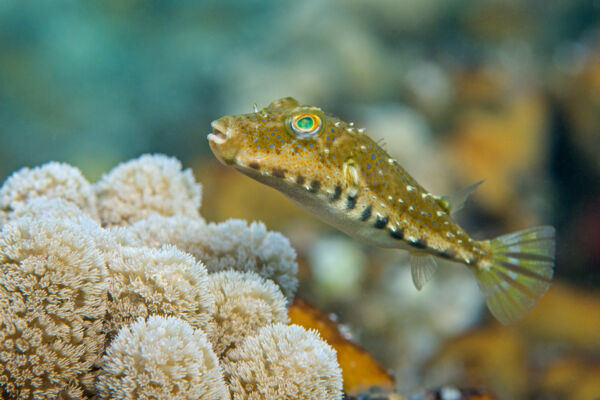
Providenciales has two great and easy-to-access locations for beach snorkeling: the Bight Reef, and Smith’s Reef. Both are located on the central north coast of Providenciales in the Bight and Turtle Cove areas, and are adjacent to the west of Grace Bay. The Bight Reef tends to be the best spot for sea turtles, parrotfish, and stingrays, and Smith’s Reef is best for small tropical fish and eagle rays.
The Bight Reef is generally the best place to start, as the reef starts directly off the beach. Smith’s Reef offers far more to explore, yet is spread over quite a distance of the coast.
Babalua Beach is another consideration as a beach snorkeling site. Located on the western side of the inlet into Turtle Cove Marina, this beach is accessed via Cherokee Drive off of Leeward Highway. Close off the beach are scattered coral heads, and as they progress to the west towards Blue Hills, the scattered coral heads become more of a continuous reef that is situated parallel to the beach.
Directly adjacent on the west to Babalua Beach is Thompson’s Cove Beach, and like the former, this coast offers the occasional reef and coral head in the shallow waters off the beach.
Beach Sites for Experienced Snorkelers
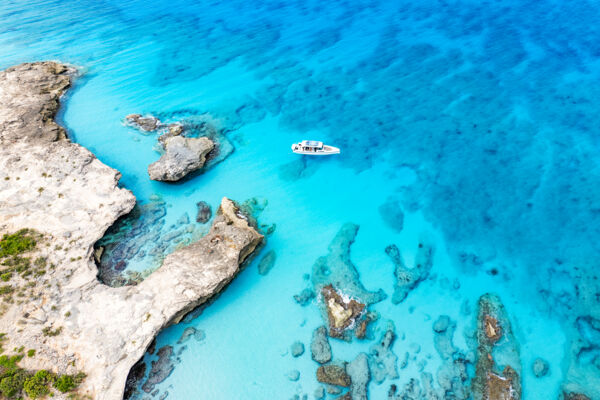
The remote west coast of Providenciales hides some amazing snorkeling sites and vibrant reefs, yet due to the difficulty of access, these sites are best for experienced snorkelers.
The beautiful Malcolm’s Road Beach combines inviting blue water, spur and groove reef formations, and a complex artificial reef system that shelters fish.
Northwest Point also has some amazing reefs and sea fan beds, yet land access is quite limited, so it’s best to visit on a boat charter.
Keep in mind that along with being secluded, the west coast ocean conditions can also be a bit more volatile at times. This side of the island is typically sheltered from the wind and is consequently calm, yet the close proximity to the deep open ocean means that the area is more exposed to abnormal ocean swells. There will probably be no one around to help if you run into difficulties.
Another great place to snorkel for those comfortable in the water is some of the mangrove wetland islands in the Princess Alexandra Nature Reserve (which includes the iguana attraction of Little Water Cay), and especially the main channel into Mangrove Cay. During incoming tides, the water clarity is quite nice, and the overhanging red mangrove canopy in the water shelters fish and juvenile turtles, sharks, and stingrays are common as well. When compared to the typical barrier reef and bay reef Turks and Caicos snorkeling sites, the mangroves offer a truly unique underwater setting.
Grace Bay Snorkeling
Due to the consistently clean and sandy bottom of Grace Bay Beach, there are no snorkeling reefs within easy access of the beach.
Spectacular snorkel sites can be found on the barrier reef off of Grace Bay, such as at the popular Leeward Cut Reef, yet these locations are over half a mile (0.8 km) off the coast, so it’ll be necessary to take a boat cruise.
Where to Buy or Rent Snorkeling Equipment
Many of the water sports and gift shops in Grace Bay sell snorkeling gear, and prices range from approximately $30 for a basic quality mask, snorkel and fins, to $70-100 for a high-quality set. We recommend visiting one of the dive shops to get the best selection and advice on gear and fitment. Snorkeling gear is also available for rent from most dive shops.

- Don’t touch or stand on anything. Coral is a living animal, and you will likely kill or severely harm any part you contact.
- Make sure not to brush anything with your flippers or gear.
- Don’t take anything. This includes all shells, sand dollars, sea urchins, starfish, and small pieces of coral.
- Don’t heavily coat yourself with sunscreen or other lotions before snorkeling. Opt for reef-safe, biodegradable sunscreen, or better yet, wear a rashguard.
- Don’t follow closely or chase any sea life.
- Don’t attempt to feed any sea life.
All of the snorkeling sites listed here are in national parks, and it is illegal to fish or collect conch and lobster. Penalties can be harsh.
Dangers
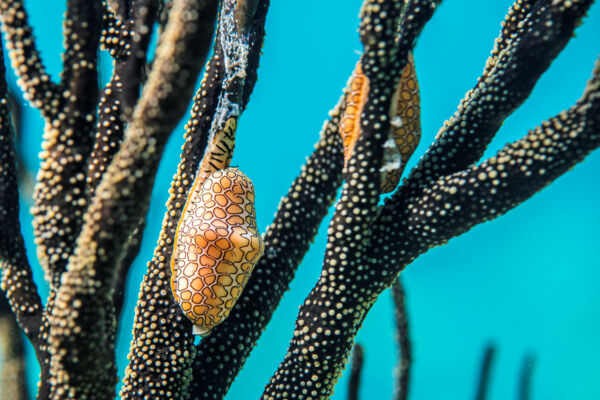
Power boats and reckless operators are the greatest danger to snorkelers. Although all of the sites we list are in national parks with regulations on vessel speed, boaters commonly ignore these rules. Generally, the areas around the reefs are safe, but be vigilant in open water far from shore.
Currents, waves, and rough conditions are another concern. Generally, the popular snorkeling sites in The Bight and Smith’s Reef have rather tame conditions, but locations off the east and west coasts of Providenciales (such as at the Northwest Point National Park) are subject to currents and rough surf at times. Beginners and unsure swimmers should consider using a snorkeling vest.
Lionfish are an invasive predatory species from the Indo-Pacific and are quite damaging to the native fish and reefs. The fish are predators and although only reaching a mature length of about 14 inches (36 cm), they consume an incredible amount of the smaller reef fish. The danger to humans comes from the venomous spines on the back of the lionfish. The stings are usually just very painful, but in the worst-case scenarios can cause temporary seizures or paralysis. Fortunately, the lionfish are not aggressive to humans and only sting in defensive situations. They are almost always only found close to the reef.

Very small jellyfish are occasionally seen around Providenciales. The jellyfish usually appear in large groups, but tend to disappear after a couple of days. The stings from these jellyfish tend to cause small itchy welts and are more of a nuisance than any danger. It’s extremely rare to see Portuguese-Man-Of-Wars or the larger types of jellyfish here.
Although they can look scary, sharks and barracudas should be considered harmless to snorkelers. The only known cases of shark attacks on snorkelers in the Turks and Caicos are a couple of incidents that happened to spear fishers (spearfishing results in blood and thrashing fish and is illegal here) far from shore and the attacks weren’t fatal.
Photography
Underwater camera choice on Providenciales is unfortunately limited to two options: rental of an underwater camera from a dive company, or the purchase of a GoPro with an underwater housing (available from a few water sports shops in Grace Bay). The other islands in the country really don’t have any options.
Snorkeling Maps
Snorkeling Charters
